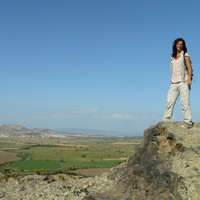Journal Articles by J. Scott Cardinal

Societies, 2023
Do social norms really matter, or are they just behavioral idiosyncrasies that become associated ... more Do social norms really matter, or are they just behavioral idiosyncrasies that become associated with a group? Social norms are generally considered as a collection of formal or informal rules, but where do these rules come from, and why do we follow them? The definition for social norm varies by field of study, and how norms are established and maintained remains substantially open to questions across the behavioral sciences. In reviewing the literature on social norms across multiple disciplines, we found that the common thread appears to be information. Here, we show that norms are not merely rules or strategies, but part of a more rudimentary social process for capturing and retaining information within a social network. We have found that the emergence of norms can be better explained as an efficient system of communicating, filtering, and preserving experiential information. By reconsidering social norms and institutions in terms of information, we show that they are not merely conventions that facilitate the coordination of social behavior. They are, instead, the objective of that social coordination and, potentially, of the evolutionary adaptation of sociality itself.

Heritage, 2020
Archaeologists have likely collected, as a conservative estimate, billions of artifacts over the ... more Archaeologists have likely collected, as a conservative estimate, billions of artifacts over the course of the history of fieldwork. We have classified chronologies and typologies of these, based on various formal and physical characteristics or ethno-historically known analogues, to give structure to our interpretations of the people that used them. The simple truth, nonetheless, is that we do not actually know how they were used or their intended purpose. We only make inferences—i.e., educated guesses based on the available evidence as we understand it—regarding their functions in the past and the historical behaviors they reflect. Since those inferences are so fundamental to the interpretations of archaeological materials, and the archaeological project as a whole, the way we understand materiality can significantly bias the stories we construct of the past. Recent work demonstrated seemingly contradictory evidence between attributed purpose or function versus confirmed use, however, which suggested that a basic premise of those inferences did not empirically hold to be true. In each case, the apparent contradiction was resolved by reassessing what use, purpose, and function truly mean and whether certain long-established functional categories of artifacts were in fact classifying by function. The resulting triangulation, presented here, narrows the scope on such implicit biases by addressing both empirical and conceptual aspects of artifacts. In anchoring each aspect of evaluation to an empirical body of data, we back ourselves away from our assumptions and interpretations so as to let the artifacts speak for themselves.

Heritage, 2020
Archaeologists have likely collected, as a conservative estimate, billions of artifacts over the ... more Archaeologists have likely collected, as a conservative estimate, billions of artifacts over the course of the history of fieldwork. We have classified chronologies and typologies of these, based on various formal and physical characteristics or ethno-historically known analogues, to give structure to our interpretations of the people that used them. The simple truth, nonetheless, is that we do not actually know how they were used or their intended purpose. We only make inferences—i.e., educated guesses based on the available evidence as we understand it—regarding their functions in the past and the historical behaviors they reflect. Since those inferences are so fundamental to the interpretations of archaeological materials, and the archaeological project as a whole, the way we understand materiality can significantly bias the stories we construct of the past. Recent work demonstrated seemingly contradictory evidence between attributed purpose or function versus confirmed use, however, which suggested that a basic premise of those inferences did not empirically hold to be true. In each case, the apparent contradiction was resolved by reassessing what use, purpose, and function truly mean and whether certain long-established functional categories of artifacts were in fact classifying by function. The resulting triangulation, presented here, narrows the scope on such implicit biases by addressing both empirical and conceptual aspects of artifacts. In anchoring each aspect of evaluation to an empirical body of data, we back ourselves away from our assumptions and interpretations so as to let the artifacts speak for themselves.

Journal of Computer Applications in Archaeology, 2019
A critical aspect of analysing an archaeological site is identifying the network of relationships... more A critical aspect of analysing an archaeological site is identifying the network of relationships between the things we find and the locations where we find them. These associations are typically determined by a combination of quantitative analyses and the professional knowledge and intuition of the archaeologist, but where exactly is the boundary between what is truly empirical field data and what is inferred through our prior knowledge and field methods? How can we best support those inferences? This paper is a critical evaluation of that boundary to firmly ground, as much as possible, a quantitative analysis on only that which we can directly observe – the thing and its location – and derive associations from that basis alone. To do so, the approach described here relies on a combination of set and graph theories rather than statistical or spatial methods. This revised ontology allows a formalization, in combinatorial terms, for describing an underlying structure to contexts and assemblages that suggests a clear association between archaeological site analysis and a well-studied class of set and graph covering problems. This, in turn, points towards potential algorithmic solutions for a more holistic parsing of the total relationships between sites, contexts, assemblages, proveniences, and artefacts.
Book Chapters by J. Scott Cardinal
N. Davis et al (2015) CULTURAL RESOURCES DATA RECOVERY AND MONITORING REPORT of the Fort Edward Village Site, Fort Edward Feeder Canal Bridge Site, and Hilfinger Pottery Site. Cultural Resource Survey Program Series No. 8. New York State Museum. Albany, NY. ISBN 978-1-55557-294-5, 2015
Quantitative analysis of assemblages and stratigraphic components from excavation at the Fort Edw... more Quantitative analysis of assemblages and stratigraphic components from excavation at the Fort Edward Village site in Fort Edward, Washington County, New York. The site consisted of mixed stratigraphic components reflecting multiple pre-contact Native occupations (c.8,000BP - contact) as well 18th century military occupation through 19th century settlement and urbanization.

A number of archaeological excavations have taken place at Fort Montgomery during the last centur... more A number of archaeological excavations have taken place at Fort Montgomery during the last century. The most extensive of these efforts was that of the Trailside Museum under the direction of John H. Mead. Between 1958 and 1971 he excavated entire buildings and features within the fort prior to a proposed reconstruction of this fort. Mead’s work resulted in a large collection of artifacts, field notes, maps, and photographs. New York State Office of Parks, Recreation and Historic Preservation requested the New York State Museum Cultural Resource Survey Program prepare an archaeological report on these excavations as part of a renewed effort to stabilize and interpret Fort Montgomery in celebration of the 225th Anniversary of the battle fought there on October 6, 1777.
The main objective of this study was the archaeological description of the fort, the buildings, and the activities of the occupants. This information was acquired from seven buildings and two features of the fort. When combined with new historical research this will provide a detailed account of the fort and the daily lives of the soldiers there. New information regarding the construction techniques, planning and organization were obtained that demonstrated the effort to construct a major, permanent fortification here. This is reflected in the section drawing across the North Redoubt and the construction details of the Grand Battery and the Powder Magazine. Stores were secured in cellars that had limited access and in a Storehouse that rested on three-foot wide foundation walls. Differences in the construction details of the Officers’ quarters and the barracks of the enlisted men indicate architecture was used to maintain social distinctions within the fort.
Thesis by J. Scott Cardinal

This thesis presents a brief overview of quantitative spatial analysis in archaeology with a disc... more This thesis presents a brief overview of quantitative spatial analysis in archaeology with a discussion of the theoretical and methodological issues involved, and describes a set of methods for using Geographic Information System (GIS) software and spatial statistics for the assessment of archaeological resources. GIS has become a nearly ubiquitous and indispensable tool in many fields of resource management including archaeology. It is, however, applied by archaeologists most frequently for basic cartographic representations, large-scale regional analyses, or resource management data warehousing. Such applications underutilize the scale-independence of GIS, which is equally potent for intra-project data assessment. This thesis describes a set of GIS, geographical, and geostatistical techniques for the initial assessment of survey data in the identification and delineation of site boundaries, intra-site spatial analysis of cultural material to facilitate the assessment of site integrity, and expedient visualizations of these data through spatial correlation overlays.
Conference Presentations by J. Scott Cardinal

Both context and assemblage are methodological constructs for the systemic associations of space ... more Both context and assemblage are methodological constructs for the systemic associations of space and objects for archaeological analysis and interpretation – proxies for the behaviors of interpretive interest and historical trajectories of those behaviors. For empirical and quantitative analyses, however, both assemblage and context rely on identifying systemic linkages of association from observable samples. Applications of computational methods of determining those linkages, either by classification or clustering, are appropriate only inasmuch as they are firmly based on and correctly characterize those empirical data. Machine learning techniques, both supervised and unsupervised, rely on projecting arbitrary n-dimensional data into a system of coordinates. These coordinate systems synthesize the various attributes of interest into a single datum point in that n-dimensional topology, with various distance measures defined to assess the proximity of each point of data to another in that n-dimensional hyperplane. The archaeological question is what properly constitutes those dimensions and measures. Perhaps, though, the answers lie not in the numbers but by considering the topologies and things themselves. This paper presents an archaeological implementation of set and graph theory and their applications for alternative computational approaches to characterizing and associating empirical archaeological data.
Stratigraphic intra-site co-expression networks of artifacts provide a means to assess both the d... more Stratigraphic intra-site co-expression networks of artifacts provide a means to assess both the depositional contexts and the significance of differential assemblage patterns. In this paper, I will describe a set of methods that address both compositional and spatial natures of site assemblages to parse the information from excavated components into interpretable sub-assemblages. The results of these methods allow not only an automated consociation of excavated components with which to reconstruct the depositional stratigraphic matrix, but also to consolidate the association networks of artifacts into interpretable sub-assemblages.

For several decades, middle ranged theories in archaeology have generally been understood and app... more For several decades, middle ranged theories in archaeology have generally been understood and applied as a set of rhetorical and analogical linkages between the archaeological record and interpretive hypotheses of behaviors. Epistemologically, however, “middle range” has broader implications than this relatively narrow archaeological application. As a relative positioning, middle range denotes establishment of logical linking arguments between evidence and inferred or hypothetical context irrespective of theoretical scale. Archaeologically, these typically relate to inverse trajectories of causality (i.e., from effect to cause), but have potential be much more than mere methodological steps or analogies between field data and conclusions. Properly conceived, middle ranged theories should link data, through explicit or inferred causal mechanisms and sets of observations, to broad or generalized theoretical abstractions. The latter step has traditionally been difficult to achieve with contemporary social theory as it is engaged and applied by archaeologists, leading to a broad disgruntlement with higher-level social theory and abstractions. We propose that this has been, in part, due to the overly narrow and insufficient applications of formal logic to middle-ranged linkages beyond the methodological scale, and present a suggested restructuring of archaeological middle range for identifying reasonable inferences at higher scales.

One of the characteristic differences between the practices of public archaeology and more tradit... more One of the characteristic differences between the practices of public archaeology and more traditional academic archaeology is that the location and scope of investigation is proscribed by project impacts of a government undertaking. This has implications on both excavation strategy and the interpretive utility of what are often only partial samples of archaeological deposits. In combination with the widely recognized “gray literature” issues, the increasingly fragmentary dataset of recorded archaeological resources presents substantial difficulties in utilizing the information accumulated through cultural resource programs for addressing substantial and significant research questions. Advances in digital data management may facilitate the synthesis of these resources into a more coherent interpretive whole. However, such synthetic or “patchwork” datasets may also require that archaeologists reexamine their interpretive framework and the way in which research questions are constructed. The paper is a discussion of these constraints and their consequences for interpretive utility and an exploration of ways to mitigate the growing body of disjointed data in a way to allow synthetic research.
Cultural resources management, archaeology, and public interpretation of the Rhodes Site in south... more Cultural resources management, archaeology, and public interpretation of the Rhodes Site in southern New York. The site consisted of the buried remnants of a mid-19th century domestic household with historical association to the Delaware & Hudson Canal.
Geographic Information System (GIS) software has become a nearly ubiquitous and indispensable too... more Geographic Information System (GIS) software has become a nearly ubiquitous and indispensable tool in many fields of resource management including archaeology. It is applied most frequently, however, to regional data warehousing and management or regional analyses. Such applications underutilize the scale-independent nature of GIS, which is equally potent for intra-project data assessment. This paper describes techniques for the initial assessment of survey data in the identification and delineation of site boundaries, tools for intra-site analysis of cultural material to facilitate the assessment of site integrity, and expedient visualizations of these data through spatial correlation overlays.
Archaeological data should ideally present a robust comparative set for the evaluation of theoret... more Archaeological data should ideally present a robust comparative set for the evaluation of theoretical constructs. The relationship of archaeological theory, socio-cultural theory, and the interpretation of archaeological data is understood to be a recursive hermeneutic cycle. Iteration of this cycle, however, tends to stall when theoretical constructs are perceived as an interpretive “toolkit” to be contingently applied or when ideological bias intervenes. This paper discusses some of the potential epistemological contradictions underlying contemporary interpretive approaches and assessments of socio-cultural organization and complexity. Differential views of causal relationships and their application in the construction of theoretical models are reconsidered.
In spring 2010, an archaeological reconnaissance survey was conducted in the Village of Constanti... more In spring 2010, an archaeological reconnaissance survey was conducted in the Village of Constantia, Oswego County New York near the north shore of Oneida Lake. The survey was for an ostensibly low-effect NY State Department of Transportation project to replace the old and crumbling sidewalks through the village center. It was expected to be a quick and easy project with a narrow project area that seemed to be already disturbed. Overall, the sort of project unlikely to turn up anything of note.
Those expectations were quickly proven grossly incorrect. Instead, the area turned up thousands of Native artifacts spanning western New York’s prehistory from the Late Archaic though the historical period as well evidence of the early European settlement of this part of the state.

Although the notional referents of social “norms” and “normative forces” are commonly a priori pr... more Although the notional referents of social “norms” and “normative forces” are commonly a priori predicates of the very concept of culture within the social sciences, current conceptualization of normativity is insufficiently realized and inadequate in the form that it is typically applied in archaeological interpretations. The concept of normativity is broadly utilized in philosophical and sociological literature, but the prevailing definitions and their associated discussions regarding beliefs and justifications are not directly applicable to archaeological theorization. A robustly operationalized formulation of normativity and its related concepts is necessary in order to utilize normative effects in an explicit evaluation of their influences on past behaviors through archaeological correlates. An archaeological formulation of the concept of normativity would require a degree of specificity in definition and ontology that has not been fully developed for the concept within the social sciences. Norms are not simply pervasive social rules or pre-existing mental templates by which the social is enacted. Such constructions require a paradoxical presumption that norms precede social interaction. This paper proposes an alternative to the belief and justification model of social norms that would be applicable to the archaeological implementation of the concept as well as implicate a different set of social processes for the establishment and propagation of social norms.

A recent study illuminated the bias toward publishing significantly positive results by researche... more A recent study illuminated the bias toward publishing significantly positive results by researchers in the social sciences, raising substantive questions regarding the treatment and dissemination of null or statistically non-significant data. In archaeology, we also tend towards emphasizing the latest discovery, the big site, or the conclusive analysis. While it is satisfying to be able to present the latest and greatest in one’s field, what then becomes of the rest of the data? Typically, these are relegated to summary tables, supplementary technical reports, or cursory discussions of miscellany that note how the rest of the data support or relate to the “big find”. The preferential bias towards positive significance, however, generates both analytical and interpretive self-selection biases in our archaeological understandings. Null data sets play an absolutely critical role in the inferential methods of spatial, quantitative, and archaeometric analyses. In addition, null or negative results can provide epistemic boundaries on the evaluation of interpretation and theory.

Stratigraphic mixing is a common scenario, whether in densely layered multi-occupation sites or s... more Stratigraphic mixing is a common scenario, whether in densely layered multi-occupation sites or site contexts that have undergone significant post-depositional disturbance. These scenarios are especially common for later historical sites and for cultural resource management contexts. The obfuscated assemblage content of mixed components frequently reflects multiple subsets of temporal sequences and/or areas of activity, rendering the assignment of component consociations for interpretation of chronology and site integrity difficult. This paper presents a set of methods, in part derived from gene co-expression network analyses, to discern diagnostic artifact subsets within the mixed assemblages and thereby infer pre-taphonomic consociations and contexts. These methods allow not only a quantitative evaluation of stratigraphic integrity, but also automate the assignment of component consociations for further spatial analyses.
Papers by J. Scott Cardinal










Uploads
Journal Articles by J. Scott Cardinal
Book Chapters by J. Scott Cardinal
The main objective of this study was the archaeological description of the fort, the buildings, and the activities of the occupants. This information was acquired from seven buildings and two features of the fort. When combined with new historical research this will provide a detailed account of the fort and the daily lives of the soldiers there. New information regarding the construction techniques, planning and organization were obtained that demonstrated the effort to construct a major, permanent fortification here. This is reflected in the section drawing across the North Redoubt and the construction details of the Grand Battery and the Powder Magazine. Stores were secured in cellars that had limited access and in a Storehouse that rested on three-foot wide foundation walls. Differences in the construction details of the Officers’ quarters and the barracks of the enlisted men indicate architecture was used to maintain social distinctions within the fort.
Thesis by J. Scott Cardinal
Conference Presentations by J. Scott Cardinal
Those expectations were quickly proven grossly incorrect. Instead, the area turned up thousands of Native artifacts spanning western New York’s prehistory from the Late Archaic though the historical period as well evidence of the early European settlement of this part of the state.
Papers by J. Scott Cardinal
The main objective of this study was the archaeological description of the fort, the buildings, and the activities of the occupants. This information was acquired from seven buildings and two features of the fort. When combined with new historical research this will provide a detailed account of the fort and the daily lives of the soldiers there. New information regarding the construction techniques, planning and organization were obtained that demonstrated the effort to construct a major, permanent fortification here. This is reflected in the section drawing across the North Redoubt and the construction details of the Grand Battery and the Powder Magazine. Stores were secured in cellars that had limited access and in a Storehouse that rested on three-foot wide foundation walls. Differences in the construction details of the Officers’ quarters and the barracks of the enlisted men indicate architecture was used to maintain social distinctions within the fort.
Those expectations were quickly proven grossly incorrect. Instead, the area turned up thousands of Native artifacts spanning western New York’s prehistory from the Late Archaic though the historical period as well evidence of the early European settlement of this part of the state.